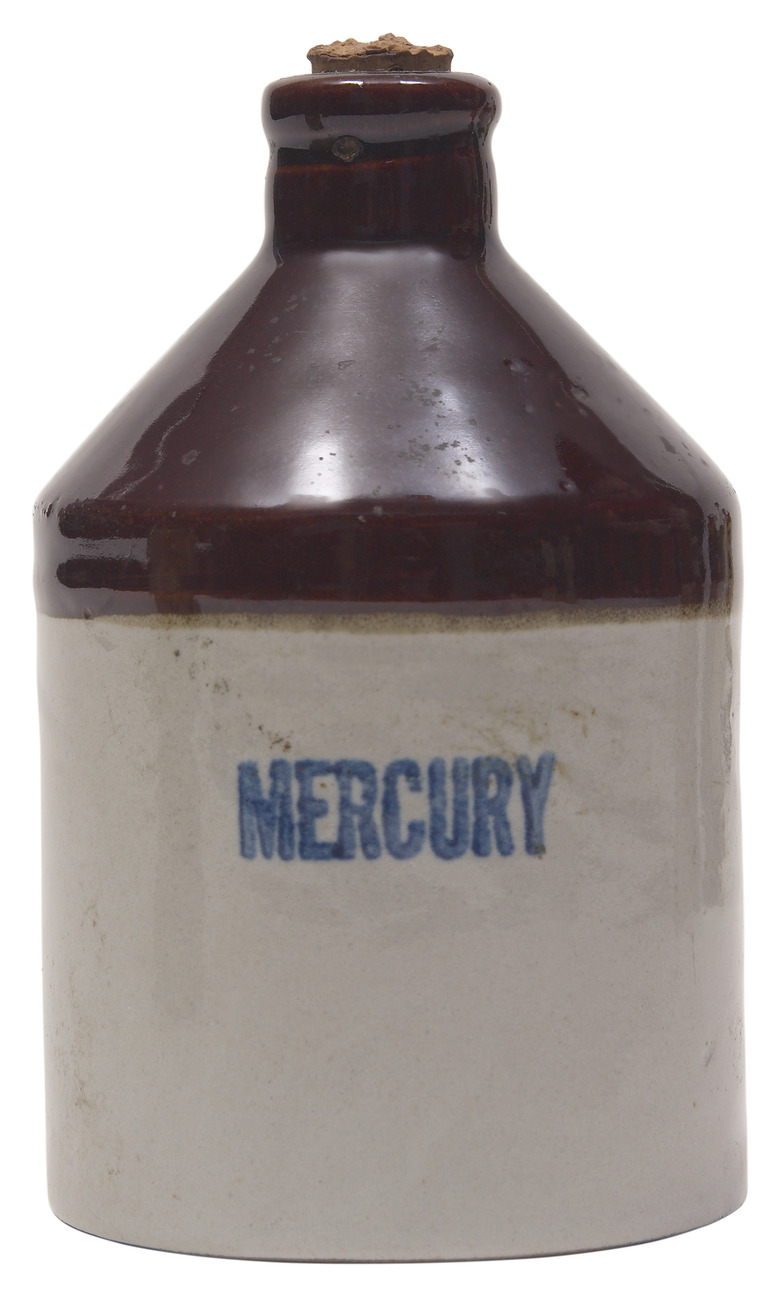Examples Of Bioaccumulation With Mercury
Mercury is a metal element with some fascinating properties, but it can also be a dangerous poison. Under the right conditions, it can build up in living tissue through the process of mercury bioaccumulation so that exposures of even small amounts of mercury can lead to large concentrations in plants and animals. A bioaccumulation example or two illustrates how mercury does its damage.
The Properties of Mercury
The Properties of Mercury
Mercury is an element with an atomic number of 80 and the chemical symbol Hg, after its Latin name, hydragyrum. It is a metal with a very unusual property, as it is liquid at room temperature. It is commonly called quicksilver in reference to its bright silver color and the characteristic way it coalesces and moves as a dense liquid. In the past it was used extensively in many switches and measuring tools, most notably in mercury thermometers. Its uses have been largely curtailed due to environmental and human health concerns.
Mercury is toxic. Some chemical compounds of mercury are water soluble, and these substances can readily lead to mercury exposure and subsequent mercury poisoning. Even non-soluble forms of mercury, including elemental mercury, can pose dangers if inhaled or swallowed.
What is Bioaccumulation?
What is Bioaccumulation?
Living organisms have some capacity to eliminate undesirable substances from their bodies in order to prevent a buildup of toxins to a dangerous level. However, there are materials that can circumvent this safeguard through a process of bioaccumulation. Small amounts of a toxin are stored in body tissue and not excreted. Continued exposure to additional small amounts leads to an accumulation of the toxin in the body's tissues, causing a build-up to dangerous levels.
Bioaccumulation occurs in a single individual. A related term, biomagnification, can operate similarly in an ecosystem across a complex chain of events. Small microorganisms can begin the process of accumulating a poison. These are eaten by larger organisms who continue to process of amassing and concentrating the toxic substance and so on up the food chain.
TL;DR (Too Long; Didn't Read)
Bioaccumulation definition: The build-up of pesticides, toxins or other substances in the tissues of an organisms.
Mercury Bioaccumulation and Disease
Mercury Bioaccumulation and Disease
Remember the Mad Hatter from Alice in Wonderland? Centuries ago, hat makers routinely use mercury in the manufacture of felt hats. Mercury built up in the bodies of the workers, leading to a variety of disease symptoms, including a form of dementia that is thought to have given rise to the phrase, mad as a hatter.
In the 1950s and 1960s, hundreds of people died from mercury poisoning in Minimata, Japan and thousands more were sickened. The mercury came from industrial discharges into Minimata Bay that were thought to be inert. But chemical and biological processes transformed the mercury into a soluble compound that then bioaccumulated and biomagnified its way through the food chain. People were sickened largely from eating mercury-contaminated fish.
TL;DR (Too Long; Didn't Read)
A small amount of mercury is often used in dental fillings. This use is considered safe by the U.S. Food and Drug Administration.
Cite This Article
MLA
Sarokin, David. "Examples Of Bioaccumulation With Mercury" sciencing.com, https://www.sciencing.com/examples-bioaccumulation-mercury-4581/. 12 April 2021.
APA
Sarokin, David. (2021, April 12). Examples Of Bioaccumulation With Mercury. sciencing.com. Retrieved from https://www.sciencing.com/examples-bioaccumulation-mercury-4581/
Chicago
Sarokin, David. Examples Of Bioaccumulation With Mercury last modified March 24, 2022. https://www.sciencing.com/examples-bioaccumulation-mercury-4581/
